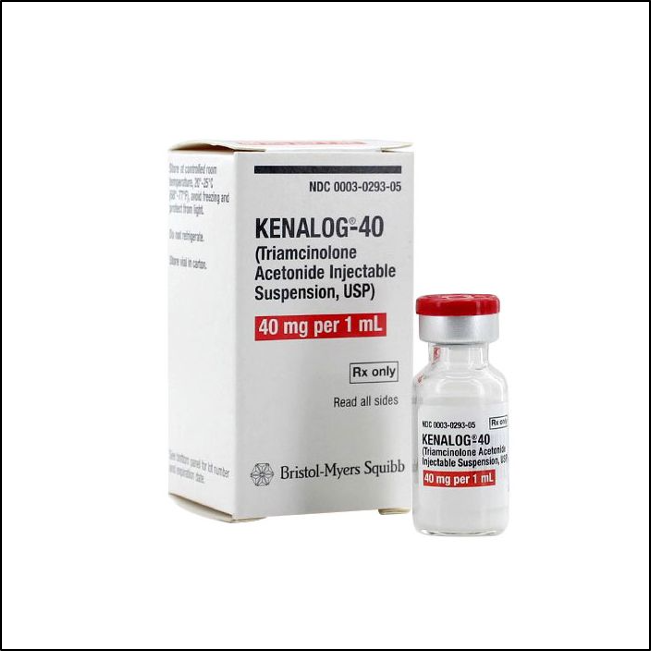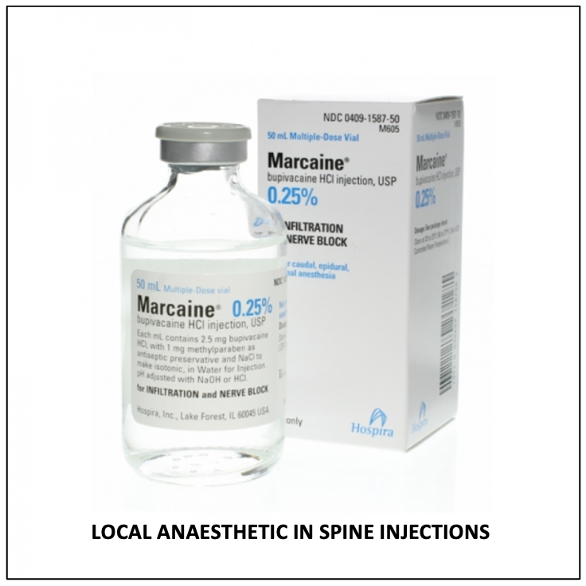Nerve Root Injection is a small procedure that is very useful to control back and leg pain performed under local or intravenous sedation. This nerve root injection helps to reduce the pain and inflammation due to the nerve root compression.

The nerve roots that come out of the spinal cord exits through small holes (foramen) in your spine. These nerve roots can be pinched by a herniated disc, narrowing of the holes (foramen)due to wear and tear of the spine.
When is this procedure recommended by the Spine Surgeon?

Nerve root injection is recommended for control of your back pain and leg pain. Inflammation caused by the wear and tear of your spine produces chemicals around your spinal nerves that irritates these nerves. This is the cause of back and leg pain called ‘sciatica’.
Where is this injection given for back pain?

The spinal column is made of bones and the soft cushion between these bones. It has a central canal (passage) that contains and protects the solid spinal cord. There are branches coming out of the spinal cord at regular intervals on each side. These are called nerve roots. These nerve roots come out of the spinal cord exits through small holes (foramen) in your spine. These nerve roots can be pinched by either a herniated disc or by the narrowing of the small exit holes (foramen)due to wear and tear of the spine. This is also called ‘Lumbar Radiculopathy’.
The nerve root injection is given close to the trapped or pinched nerve.
What does the Nerve root injection contain?
Facet Joint injection contains a mixture of:
- Kenalog 40 mgs (Steroid)
- Marcaine 0.25% (Local anaesthetic)
-

Kenalog is a Steroid commonly used in Lumbar Nerve root Injections. This steroid works around the trapped and inflamed nerve root and reduces pain and inflammation around them.
It blocks the chemicals that your body releases due to the inflammation from the ruptured disc and the trapped nerve root. After the injection, there is instant pain relief. This will allow you to move your back and leg comfortably.
This increase in movement will further reduce the stiffness around the bones, ligaments and muscles of your spine.

Marcaine 0.25% is a local anaesthetic (numbing solution) used commonly by your dentist. This is also used in Lumbar Nerve root Injections. This solution works around the trapped nerve of your spine. This works well in combination with steroid.
It blocks the pain signals released by your irritated nerve root instantly. The steroid works to control the inflammation over the long term. Due to the pain relief, there is more movement in your back and leg.
This increase in movement will further reduce the stiffness around the bones, ligaments and muscles of your spine.

Omnipaque 300 is a contrast dye that helps locate the Spinal Nerve root as it comes out of the Spinal Canal. This gives an accurate location and confirms the position of the Nerve Root. This is commonly used in Nerve Root Spine Injections.
The dye on the Xray picture will show the position of the Nerve Root. This will allow the spine surgeon to place the needle in the exact position and give the injection. This improves the safety of the procedure.
What does the injection exactly do?
Nerve root injection contains a mixture of numbing solution (local anaesthetic) and corticosteroid (steroid). The local anaesthetic will improve the pain immediately and the steroid in the solution will act on the inflammation around the nerve roots and control the ‘sciatica pain’ in the long term. This improvement in the pain will help you move around better and mobilise your lower back. This increase in the movement of the small joints of your spine will further reduce the stiffness around the bones, ligaments and muscles.
What happens during Lumbar Nerve Root steroid injection procedure?
Day Case Procedure:

This procedure is done as a Day Surgery procedure. You will need to come in starved for at least 6 hours and will be at the hospital for less than a day. You will be given a sedative by the anaesthetist so that you do not feel the pain or the procedure.
The Lumbar nerve root steroid injection procedure takes less than 10 minutes and is very safe.
Procedure is done under X-ray:

X-rays will be taken (shown in picture) to make sure that the needle placement is accurate. The dye (Omnipaque 300) is not used before the anaesthetic and steroid solution is injected. You will recover from the procedure and sedation very quickly. A spinal needle is used to inject the steroid and anaesthetic solution in and around the ‘nerve root’.
After the injection, you will be taken to the recovery room from theatre and monitored for an hour. You will be able to leave hospital once you are safe.
What happens after the Nerve root joint injection?

After the injection, you will be taken to the recovery room from theatre and monitored for an hour. You will be able to leave hospital once you are safe. You must continue to take your usual pain relief medication that your doctor had prescribed for you till you begin to feel benefit.
Some medications like morphine, gabapentin, pregabalin or amitriptyline need to be continued and not stopped abruptly.
What are the benefits of Lumbar Nerve root injection?
70% of patient will have significant benefit from a nerve root injection for low back pain. But the duration of this pain control varies between a few weeks to a few months. Sometimes the pain relief can last for a year. The disc swelling will reduce naturally due to your increase in mobility and activity. However, there is an increased risk of having a further episode of back and leg pain.
Repeat Injections: If the initial nerve root injection was helpful in controlling your leg and back pain, you will be offered a repeat injection.
How many Nerve root injections can you have?
Most experts recommend not more than 2 injections over a 12-month period. There are concerns about the adverse side effects of repeated steroid injections on the nerve root and on your metabolism. There is a very small risk of diabetes, raised blood pressure, decreased immunity, recurrent infections and weight gain.
What are the risks and complications of Nerve root injection?
Infection:
This is rare but there is an increased risk in skin conditions like psoriasis or eczema. The rate is less than 1 in 1000 injections.
Bleeding:
There is very little chance that you will bleed from a tiny puncture wound with a needle. But there is an increased risk of bleeding if you are taking medications to ‘thin your blood’ like warfarin, rivaroxaban or clopidogrel. You will be advised to stop these medications at least a week in advance of the procedure for safety.
Allergic Reaction to Contrast Dye:
In rare instances, you may be allergic to the dye that is used to check the exact needle position. This happens in the range of 1in 200 to 1 in 500 injections. People who are allergic to seafood are found to be more prone to this reaction. These include skin rash, itching and flushing of the face.
Headache:
This happens when there is a small leakage of the fluid present around your spinal cord from the injection. This fluid usually leaks out and can cause headache while standing and walking for a few days. You will be advised to lie down flat for a few days until the headache settles.
Fascial Flushing:
This is a temporary side effect from the steroid injection and settles down very quickly.
Rise in Blood Sugar:
In people with diabetes or at risk of diabetes, their blood sugar is found to rise immediately after the caudal epidural injection. This will settle after a few days without treatment.
Vasovagal and Fainting episode:
This can be due to the stress of the procedure and is not life threatening. 1 in 100 patients do have such episodes and it settles very quickly.
When can you get back to work after lumbar nerve root steroid injections?
Lumbar Nerve root steroid injections are simple, non-invasive, safe procedure that provides instant relief from back pain and stiffness. However the results vary between patients and last anywhere between six weeks to 6 months. It is the physiotherapy exercise program that gives the maximum benefit from this injections.
These steroid injections just provide the pain relief necessary for the physiotherapy program to improve the movement. Therefore the success of the nerve root steroid injection depends on the physiotherapy program that follows after the injection.
How successful are Lumbar nerve root steroid injections?
You are advised to take the next day off work as you had an intravenous sedation. If your back pain persists or is worse, you may need a few days off work. Usually, it can take several weeks before you feel the full benefit of the nerve root joint injection. There are no limitations for work if your pain settles after a day.
How painful are nerve root steroid injections of your back?
The actual procedure of nerve root injection is not painful as it is done under sedation and it takes just 10 minutes for the actual procedure to be done. You will wake up with no pain and will be sent home with medications to control any pain after the local anaesthetic wears off.
Can you drive after a lumbar nerve root injection?
Avoid driving for at least 12 hours after the procedure. You may suffer from dizziness or sickness as you may not have fully recovered from the sedation. It is common to experience mild soreness at the site of the steroid injections for 24–48 hours.
Your neck may feel stiff and sudden movements or jerks can cause severe pain. So, driving may be a risk if done early.
What happens after the lumbar nerve root injection?
The effect of lumbar nerve root steroid injection lasts between 6 weeks to 6 months. There is an instant pain relief from the local anaesthetic which lasts for a few hours. The cortisone (steroid) starts to work in 24 to 48 hours and last for a good few months.
In some patients they seem to last for ever. Some need a few more injections for good relief from back and leg pain.
What happens if the lumbar nerve root injections don’t work?
Lumbar nerve root steroid injections are successful on most occasions. However in some instances, you may need up to 2 or three sets of these injections. If this treatment with steroid injections are unsuccessful, we will carefully examine and find reasons why.
When is my follow up appointment?
This is booked in 4 weeks after the injection. It allows you to explain the progress of you back and leg pain to Mr Rajesh and he may arrange physiotherapy to build on the gains from the injection. Repeat injections or possible the need for surgery only if necessary, can be discussed.
